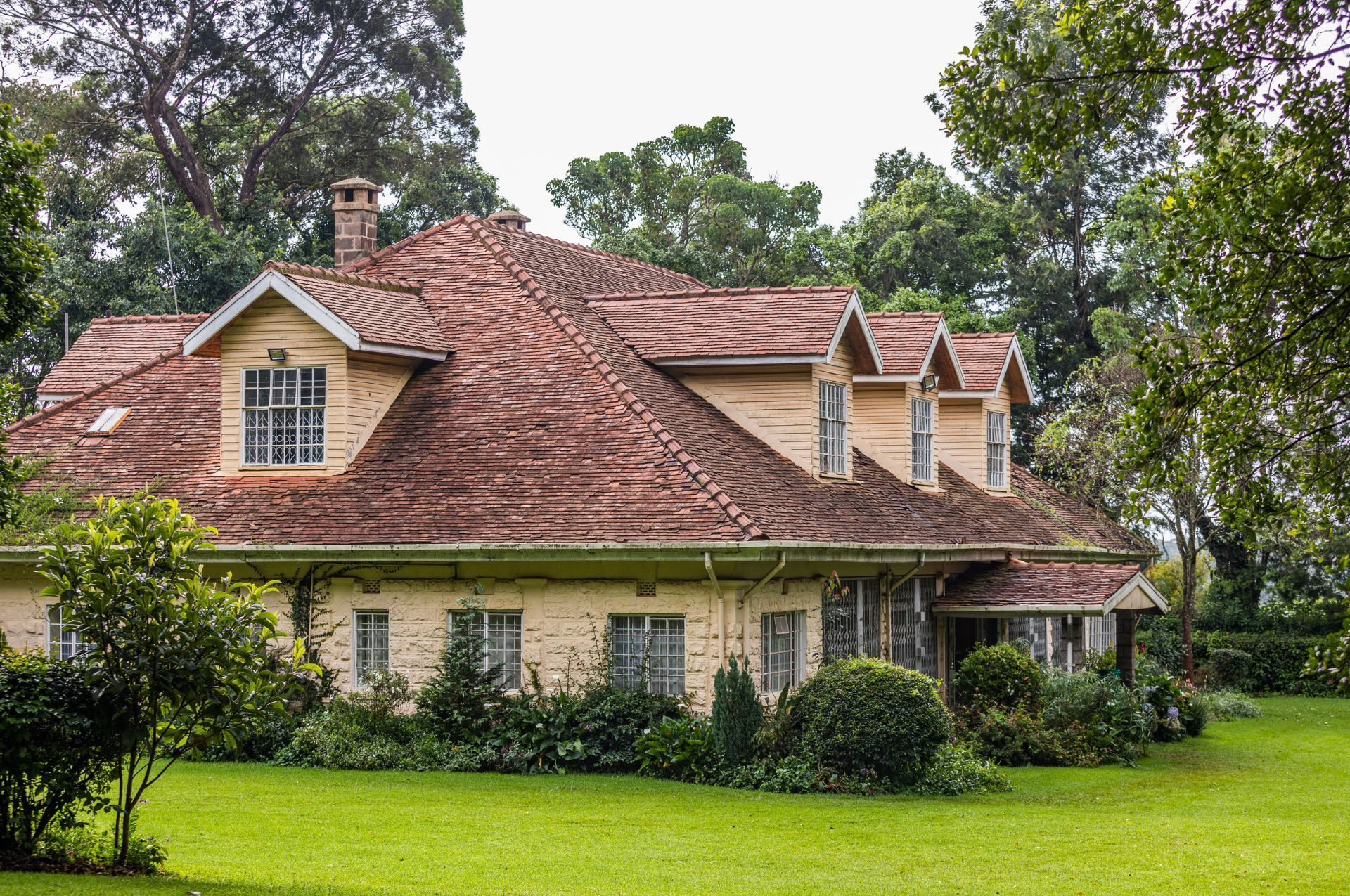
Top 3 Recommended Policies
Home insurance is a crucial aspect of homeownership, providing financial protection against various risks. For residents of East Granby, Connecticut, understanding the nuances of home insurance is essential to safeguarding your investment. This article delves into the key components of home insurance, the specific considerations for East Granby residents, and tips for finding the right policy.
Understanding Home Insurance Basics
What is Home Insurance?
Home insurance, also known as homeowner's insurance, is a type of property insurance that covers losses and damages to an individual's residence. This insurance typically protects against various risks, including theft, fire, and natural disasters. It also provides liability coverage in case someone is injured on your property.
Home insurance policies can vary significantly in terms of coverage options, limits, and exclusions. Understanding these basics is the first step toward making informed decisions about your policy. Home insurance is not just a safety net; it is a crucial part of responsible homeownership. By having a comprehensive policy, homeowners can ensure that they are financially protected against unforeseen events that could otherwise lead to significant financial strain.
Types of Coverage
Home insurance generally includes several types of coverage, each serving a specific purpose:
- Dwelling Coverage: This covers the structure of your home, including walls, roof, and built-in appliances.
- Personal Property Coverage: This protects your personal belongings, such as furniture, electronics, and clothing.
- Liability Protection: This covers legal expenses if someone is injured on your property or if you accidentally cause damage to someone else's property.
- Additional Living Expenses: If your home becomes uninhabitable due to a covered event, this coverage helps pay for temporary housing and other living costs.
In addition to these standard coverages, many policies offer optional add-ons or endorsements that can enhance your protection. For instance, you might consider adding coverage for valuable items like jewelry or art, which may exceed the limits of standard personal property coverage. Additionally, some homeowners opt for flood insurance or earthquake coverage, especially if they live in areas susceptible to these specific risks. Understanding the full range of available options ensures that you can tailor your policy to fit your unique needs and circumstances.
Factors Influencing Home Insurance Costs
Several factors can influence the cost of home insurance premiums. These include:
- Location: Homes in areas prone to natural disasters or high crime rates may have higher premiums.
- Home Value: The more valuable your home, the higher your insurance costs are likely to be.
- Deductibles: Opting for a higher deductible can lower your premium, but it also means more out-of-pocket expenses in the event of a claim.
- Claims History: A history of frequent claims can lead to higher premiums.
Moreover, the age and condition of your home can also play a significant role in determining your premium. Older homes may have outdated electrical systems or plumbing, which can increase the risk of fire or water damage, leading to higher insurance costs. Additionally, the materials used in construction can influence premiums; for example, homes built with fire-resistant materials may qualify for discounts. It's essential to regularly review your policy and consult with your insurance agent to ensure you are getting the best coverage at the most competitive rate, taking into account any changes in your home or local environment that might affect your insurance needs.

Home Insurance in East Granby, CT
Local Risks and Considerations
East Granby, located in Hartford County, is known for its picturesque landscapes and small-town charm. However, like any region, it has its unique risks that homeowners should consider when purchasing insurance.
Natural disasters, such as heavy snowfall, flooding, and occasional thunderstorms, can pose risks to homes in East Granby. Understanding these local risks can help residents select appropriate coverage options to protect their properties effectively. For instance, heavy snowfall can lead to roof collapses if not properly managed, while flooding can damage basements and lower levels of homes. Homeowners may want to consider additional coverage for specific risks, such as flood insurance, which is often not included in standard policies. Furthermore, the proximity to rivers and lakes may increase the likelihood of water-related issues, making it essential for residents to assess their property’s vulnerability to such events.
State Regulations and Requirements
Connecticut does not mandate homeowners to carry insurance, but it is highly advisable, especially for those with mortgages. Lenders often require borrowers to maintain a certain level of coverage to protect their investment.
It's essential for East Granby homeowners to familiarize themselves with state regulations regarding home insurance. This knowledge can help ensure compliance and provide peace of mind when navigating the insurance landscape. Additionally, homeowners should be aware of the specific coverage requirements set forth by their lenders, as these can vary significantly. For instance, some lenders may require higher liability coverage or specific endorsements for natural disaster protection. Understanding these nuances can help homeowners avoid potential pitfalls and ensure they are adequately covered in the event of a claim.
Finding the Right Insurance Provider
Choosing the right insurance provider is crucial for securing the best coverage at a competitive price. East Granby residents can benefit from researching local insurance companies and comparing their offerings.
Consider seeking recommendations from friends, family, or local real estate agents who may have insights into reputable providers in the area. Additionally, online reviews and ratings can offer valuable information about customer satisfaction and claims handling. It's also wise to inquire about the claims process and how quickly providers typically respond to claims, as this can significantly impact the experience during stressful times. Many insurance companies offer personalized consultations, allowing homeowners to discuss their specific needs and receive tailored advice. This can be particularly beneficial for first-time homeowners or those new to the area, ensuring they make informed decisions about their insurance coverage.
Tips for Choosing Home Insurance
Assess Your Coverage Needs
Before selecting a home insurance policy, it's vital to assess your coverage needs. Take inventory of your possessions and evaluate the value of your home. This will help you determine the appropriate amount of dwelling and personal property coverage.
Consider any additional structures on your property, such as garages or sheds, as these may require additional coverage. Understanding your unique needs will enable you to tailor your policy effectively. Additionally, think about any high-value items you may own, such as jewelry, art, or collectibles. These items often require special endorsements or riders to ensure they are fully protected. By accurately assessing your coverage needs, you can avoid being underinsured and ensure that you have peace of mind in the event of a loss.
Compare Quotes from Multiple Providers
Obtaining quotes from multiple insurance providers is a smart strategy for finding the best deal. Each company may offer different rates and coverage options, so comparing them can help you identify the most suitable policy for your needs.
When requesting quotes, ensure that you provide the same information to each provider to facilitate accurate comparisons. Look beyond the premium costs; consider the coverage limits, deductibles, and any additional features that may be included. For example, some insurers may offer discounts for bundling home and auto insurance, while others might provide incentives for having a security system in place. Taking the time to explore these options can lead to significant savings and a policy that better fits your lifestyle.
Understand Policy Exclusions
Every home insurance policy comes with exclusions—specific situations or events that are not covered. It's crucial to read the fine print to understand what is excluded from your policy.
Common exclusions may include damage from floods, earthquakes, or routine wear and tear. If you live in an area prone to such risks, consider purchasing additional coverage or a separate policy to protect against these specific threats. Furthermore, be aware of any limitations on liability coverage, which could affect your financial protection if someone is injured on your property. Understanding these exclusions not only helps in selecting the right policy but also prepares you for potential gaps in coverage that could arise during unforeseen circumstances.
Common Home Insurance Myths
Myth 1: Home Insurance Covers Everything
A prevalent misconception is that home insurance covers all types of damage. In reality, policies have limitations and exclusions. Understanding what is and isn’t covered is essential for homeowners to avoid surprises during claims. For instance, many policies do not cover damage caused by floods or earthquakes, which often require separate policies or endorsements. Homeowners should also be aware that certain high-value items, such as jewelry or art, may have limited coverage under standard policies, necessitating additional riders to ensure full protection.
Myth 2: Renters Don’t Need Insurance
Many renters believe that they don’t need insurance because their landlord has coverage for the building. However, renters should consider obtaining renters insurance to protect their personal belongings and provide liability coverage. This type of insurance can cover losses from theft, fire, or water damage, which can be particularly devastating for individuals who may not have the financial means to replace their possessions. Additionally, renters insurance can help cover legal expenses if a guest is injured in the rented space, offering peace of mind in an often-overlooked area of personal finance.
Myth 3: All Home Insurance Policies Are the Same
Not all home insurance policies are created equal. Different providers offer varying coverage options, limits, and deductibles. Homeowners should carefully review their options to find a policy that meets their specific needs. For example, some policies may include additional living expenses coverage, which can help pay for temporary housing if a home becomes uninhabitable due to a covered loss. Furthermore, homeowners should consider factors such as the insurer's reputation, customer service ratings, and claims process efficiency, as these can significantly impact the overall experience when filing a claim.

How to File a Home Insurance Claim
Steps to Take After a Loss
In the unfortunate event of a loss, knowing how to file a home insurance claim can streamline the process. Here are the steps to follow:
- Document the Damage: Take photos and videos of the damage to provide evidence for your claim.
- Contact Your Insurance Provider: Notify your insurer as soon as possible to initiate the claims process.
- Complete the Claims Form: Fill out the necessary claims form provided by your insurer, detailing the damages and losses.
- Meet with the Adjuster: An insurance adjuster may visit your property to assess the damage and determine the payout.
Tips for a Smooth Claims Process
To ensure a smooth claims process, keep detailed records of all communications with your insurance provider. Maintain copies of all documents submitted, and follow up regularly to check on the status of your claim.
Being proactive and organized can help expedite the claims process and ensure that you receive the compensation you deserve.
Additionally, it's wise to familiarize yourself with your policy's coverage limits and exclusions before a loss occurs. Understanding what is covered can prevent surprises during the claims process. For instance, certain natural disasters may not be included in a standard policy, so knowing these details can help you prepare better. Furthermore, consider creating a home inventory list that includes photographs and descriptions of your valuable belongings. This list can be invaluable when filing a claim, as it provides a clear record of what was lost or damaged.
Lastly, don't hesitate to seek assistance if you feel overwhelmed. Many homeowners find it beneficial to consult with a public adjuster, who can advocate on your behalf and help navigate the complexities of the claims process. This professional can provide insights into maximizing your claim and ensuring that all damages are accounted for, giving you peace of mind during a challenging time.
Conclusion
Home insurance is a vital component of responsible homeownership in East Granby, CT. By understanding the basics of home insurance, assessing local risks, and choosing the right provider, homeowners can protect their investments and gain peace of mind.
Whether you are a first-time homeowner or looking to reassess your current policy, being informed about home insurance will empower you to make the best decisions for your unique situation. Remember to compare quotes, understand your coverage needs, and stay informed about any changes in the insurance landscape.
In the end, the right home insurance policy can provide invaluable protection for your home and belongings, allowing you to enjoy the beauty and charm of East Granby without worry.
Contact Us
Phone
Locations
Connecticut Location
703 Hebron Ave., 3rd Floor, Glastonbury, CT 06033
North Carolina Location
436 East 36th St., Charlotte, NC 28205


